Probably this email is too long to read directly from your inbox. If you click on "View entire message" or “Read in App”, you'll be able to view the entire post in your email app.
I spent three months in Ecuador with Fernanda. We mainly stayed in Riobamba, the city where her family lives. From there, we travelled to other cities and parts of the country. We visited Quito, Baños, Quilotoa Lake, Macas and Cuenca.
This time, I want to write about Riobamba, which I have always mentioned in the intros of my recent newsletters, but I have never described what it was like living there and how this city is, and I have never shown pictures of it.
Riobamba, often called the Sultana de los Andes, is a historic city in Ecuador's central highlands. It is the capital of Chimborazo Province and is approximately 2,750 meters (9,022 feet) above sea level. Breathtaking landscapes, including the Chimborazo volcano, surround the city.
Founded in 1534 by the Spanish, Riobamba was the first city established in Ecuador by European settlers. However, a devastating earthquake in 1797 forced the city to relocate to its present location. Today, Riobamba retains a colonial charm, with cobblestone streets, historic churches, and well-preserved architecture.
The city has a strong Indigenous and mestizo identity, with vibrant markets where people from surrounding Andean communities sell textiles, food, and handicrafts. The Feria de Riobamba, a traditional Saturday market, is one of the best places to experience the local culture.
Riobamba has a cool, Andean climate, with temperatures typically ranging between 5°C and 20°C (41°F and 68°F) throughout the year. Due to its high altitude, nights can be quite chilly. It was interesting for me to deal with no seasons of weather and live in an eternal spring. I found it difficult to explain to my family that even if it is in the high mountains, it is not cold, and there is no snow.
Riobamba's local cuisine showcases traditional Andean flavours, offering a variety of hearty and flavorful dishes. One of the most popular is hornado, a slow-roasted pork dish served with mote (boiled corn) and llapingachos, which are delicious cheese-stuffed potato patties. Another local speciality is ceviche de chochos, a vegetarian take on ceviche made with lupin beans, onions, and tomatoes, often topped with toasted corn for extra crunch. I loved ceviche de chochos, one of my favourite Ecuadorian dishes, llapingachos are delicious, I will talk about hornado later in this post. In general, I like Ecuadorian cuisine, it has so many tasty foods with interesting flavours.
The historic centre of Riobamba is in a colonial and republican-era style that reflects the city’s rich history and cultural heritage. Known for its wide streets, well-preserved colonial buildings, and grand churches, the area is a pleasant blend of Spanish influence and indigenous tradition.
At the heart of Riobamba’s historic centre, Parque Maldonado serves as the city’s main square and a lively gathering place for locals. Surrounded by important colonial-era buildings, including Riobamba Cathedral and City Hall, the park is a hub of history and culture. At its centre stands a statue of Pedro Vicente Maldonado, an 18th-century Ecuadorian scientist and geographer, honouring his contributions to the country.
Among the park’s most significant landmarks is the Cathedral of Riobamba, originally built in the 16th century and reconstructed in the late 18th century after a devastating earthquake. Its intricately carved stone façade, crafted from the ruins of the old city, blends Catholic and indigenous symbolism, reflecting the region’s rich heritage. Inside, the cathedral houses stunning religious artwork.
Other notable religious sites include the Basilica del Sagrado Corazón de Jesús, an impressive neo-Gothic church known for its towering spires and beautiful stained-glass windows, and La Concepción Church and Monastery, one of Riobamba’s oldest religious complexes. It is home to a collection of colonial-era art and artefacts.
Riobamba’s streets and markets vibrantly reflect its colonial heritage and rich culinary traditions. Calle 10 de Agosto and Primera Constituyente are two of the city's most picturesque streets, lined with well-preserved colonial and early republican buildings featuring elegant balconies and charming courtyards. Strolling through these streets offers a glimpse into Riobamba’s architectural past and local way of life.
I enjoyed Riobamba’s city centre, it may not be the most beautiful city in Ecuador, but it has its unique charm. Unlike Quito or Cuenca, it is less touristy, yet it maintains a peaceful and authentic atmosphere. What I appreciated the most, however, were the markets, which added to the city’s character.
A lively market is in Plaza Roja (Red Plaza), bustling with activity, this market area is filled with stalls selling artisan goods and fresh produce, making it a great place to explore Ecuadorian craftsmanship. I went to this market to buy gifts to bring back to Europe.
Another one is Mercado La Merced, one of Riobamba’s oldest and most beloved markets. Here, vendors serve up local specialities such as hornado and llapingachos. Fernanda’s family brought me here to experience the particular way hornado is offered to clients.
The hornado ladies in Mercado La Merced are famous for their lively, theatrical, and skilful way of selling this dish. Their energy, charisma, and unique sales techniques make the experience of eating hornado just as special as the food itself.
As I walked through Mercado La Merced, I heard shouting from the different hornado vendors, each trying to attract customers. They call out things like:
"¡Venga mi amorcito! ¡El mejor hornado está aquí!" (Come here, my love! The best hornado is right here!)
"¡Pruébelo sin compromiso, mijito!" (Try it without commitment, my little one!)
"¡Mire esta carne suavecita, recién salido del horno!" (Look at this soft meat, just out of the oven!)
Each vendor competes to be the loudest and most convincing, creating a fun and dynamic atmosphere.
Now I think you can guess why Fernanda’s family wanted to bring me there, the ladies were quite funny and greeted me with all sorts of nicknames like "Mister," "Doctor," "Guapo," "Gringuito," and "Venga Coloradito." They also switched to English, saying "Hello my friend" or "Hello Mister," since it was obvious I wasn’t Ecuadorian. I felt a bit at the centre of attention, but it was all in good fun. Their warmth and playful energy made the experience even more enjoyable, and I was happy to be part of it.
Behind each vendor’s stall, a whole roasted pig is displayed, often with its head raised for maximum visual impact. The vendors dramatically slice the crispy skin and pull out steaming hot, tender meat, making sure you see how juicy and flavorful it is.
For vegetables, fruits and meat shopping, we usually went to Mercado San Alfonso, one of Riobamba’s traditional markets, offering a more local and intimate experience than the bustling Mercado La Merced. Located in the heart of the city, it is a great place to explore authentic Ecuadorian flavours.
Also, Mercado San Alfonso has hornado, served in generous portions with llapingachos, mote, and encurtido. Beyond food, the market is also a great spot to find locally grown fruits and vegetables, as well as artisanal products.
Although Riobamba had some drawbacks, such as the lack of green areas and places for outdoor sports, apart from the old town, the city wasn’t particularly beautiful. I still really enjoyed my time there living with Fernanda’s family. The people were incredibly friendly, and I always felt safe, which made everyday life much more pleasant. One of the things I loved most was the strong sense of community, everyone seemed to know each other, and even the small shop owners would often remember you after just a few visits. The city also had a great atmosphere, with cosy cafes, delicious street food, and breathtaking views of the surrounding mountains, which made up for some of its shortcomings.
See you soon,
Flavio




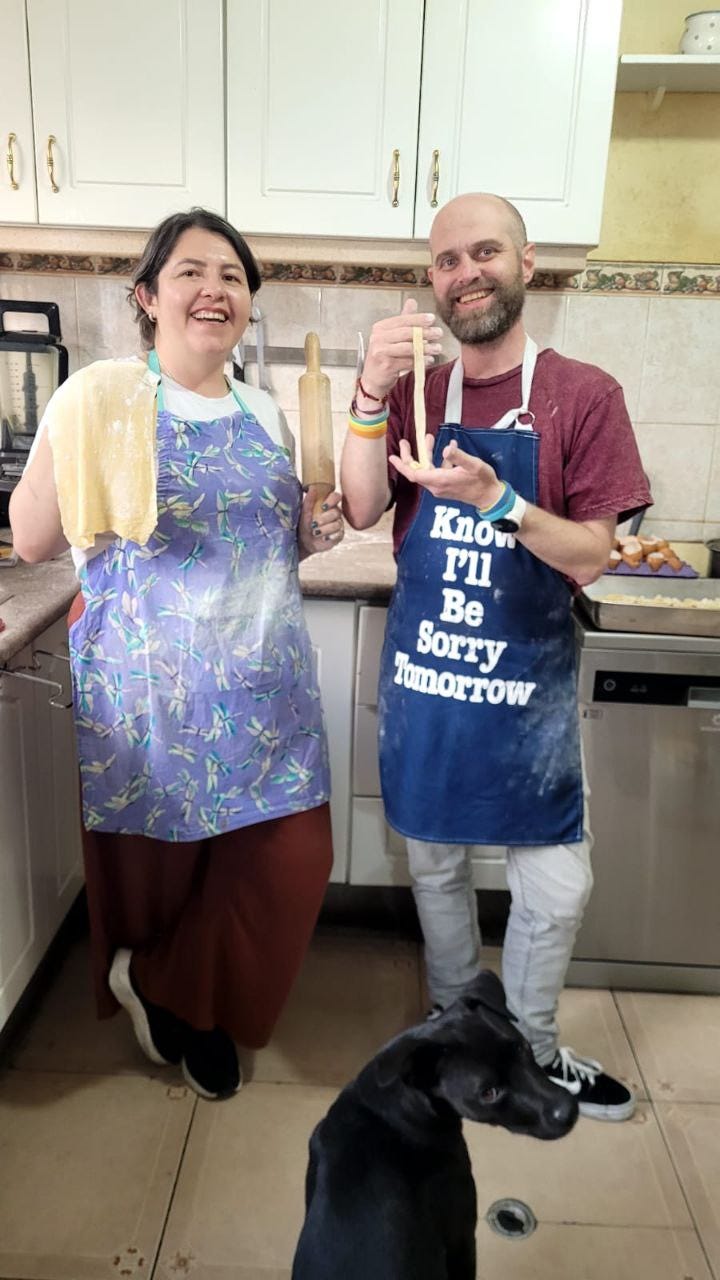

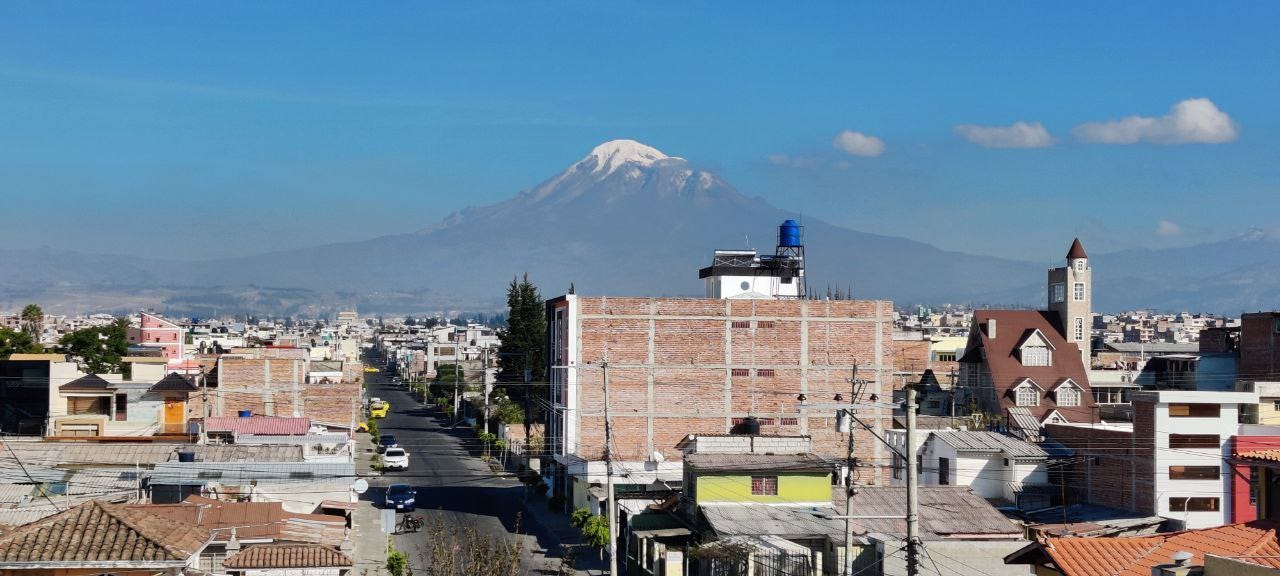
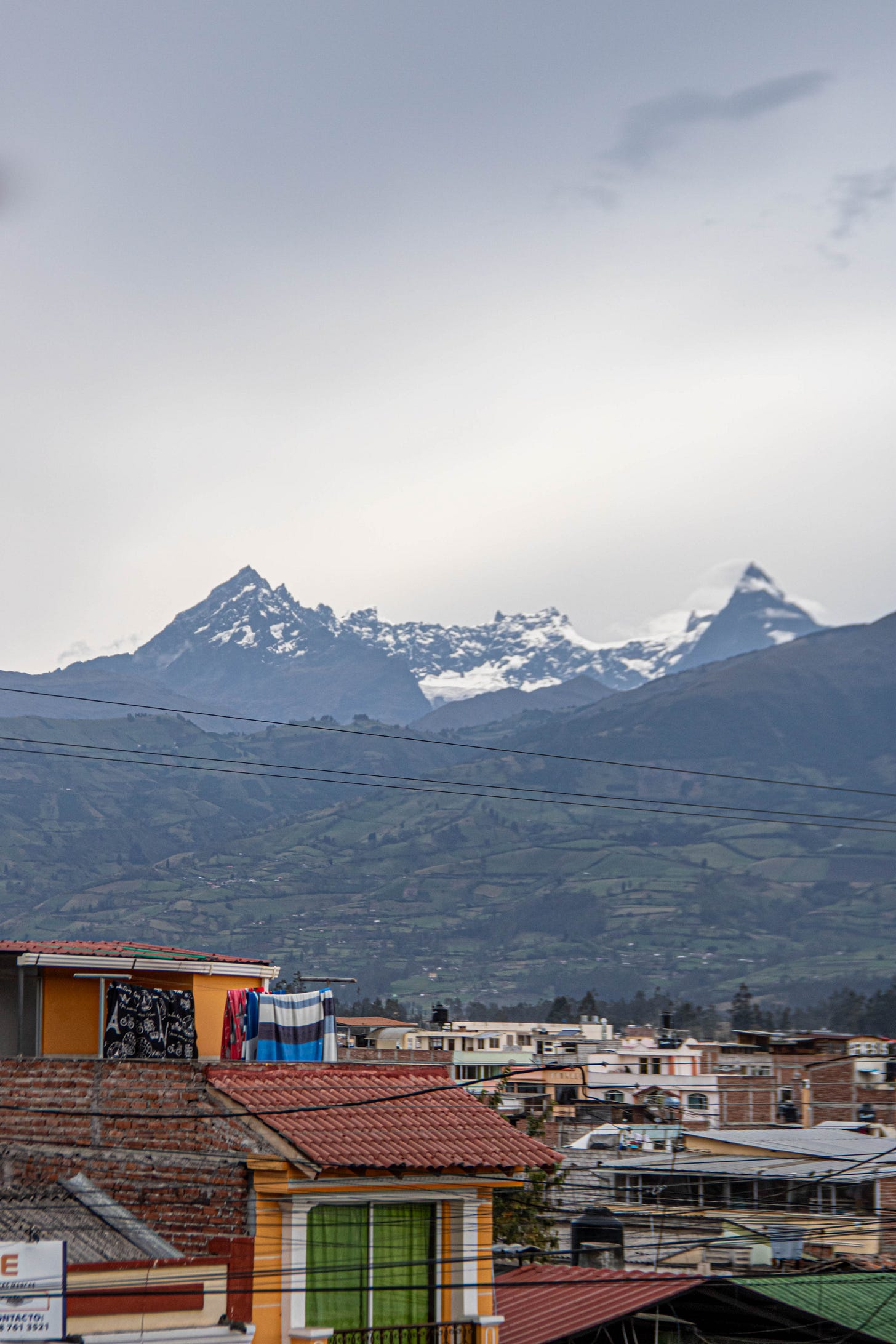



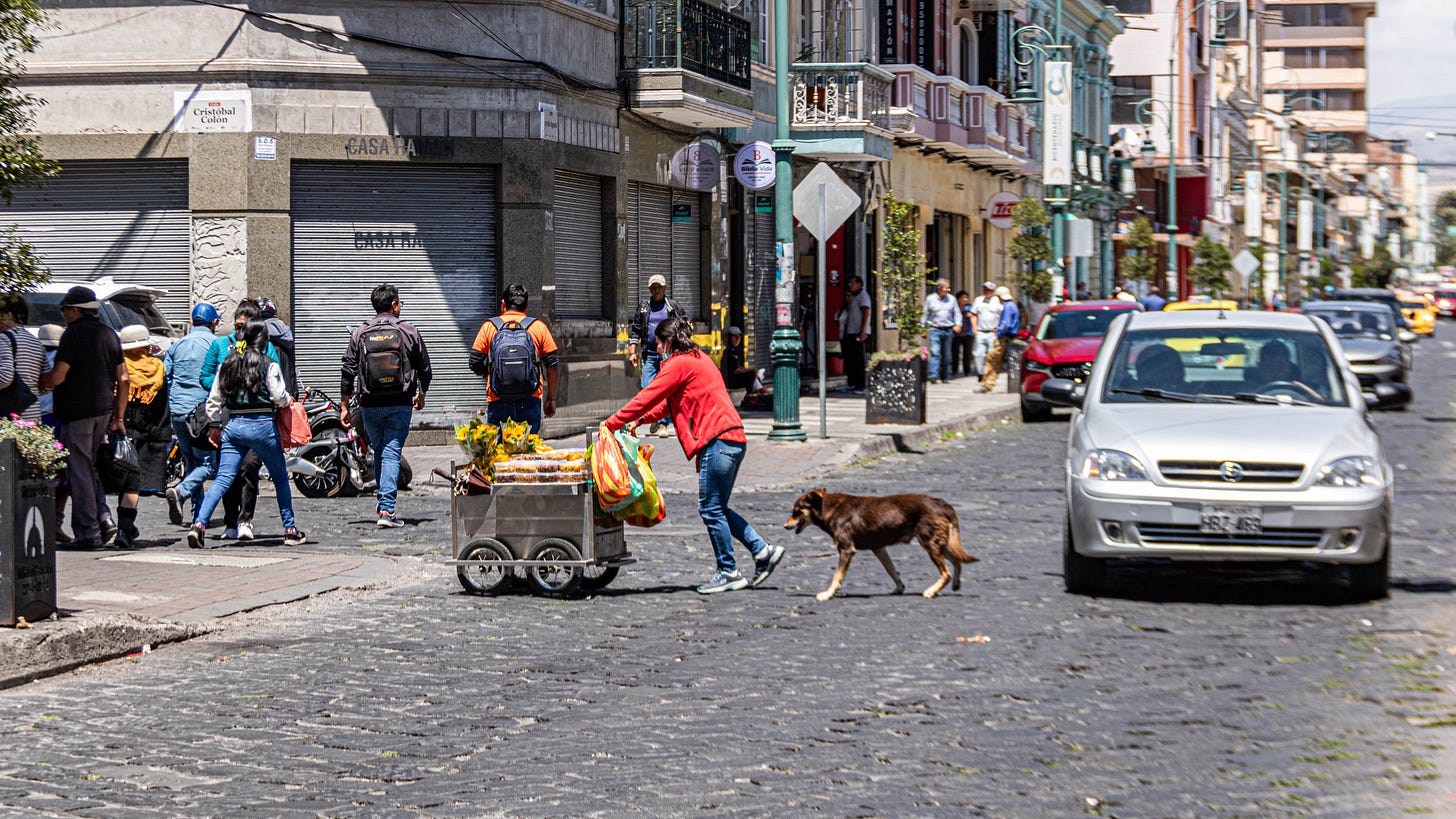
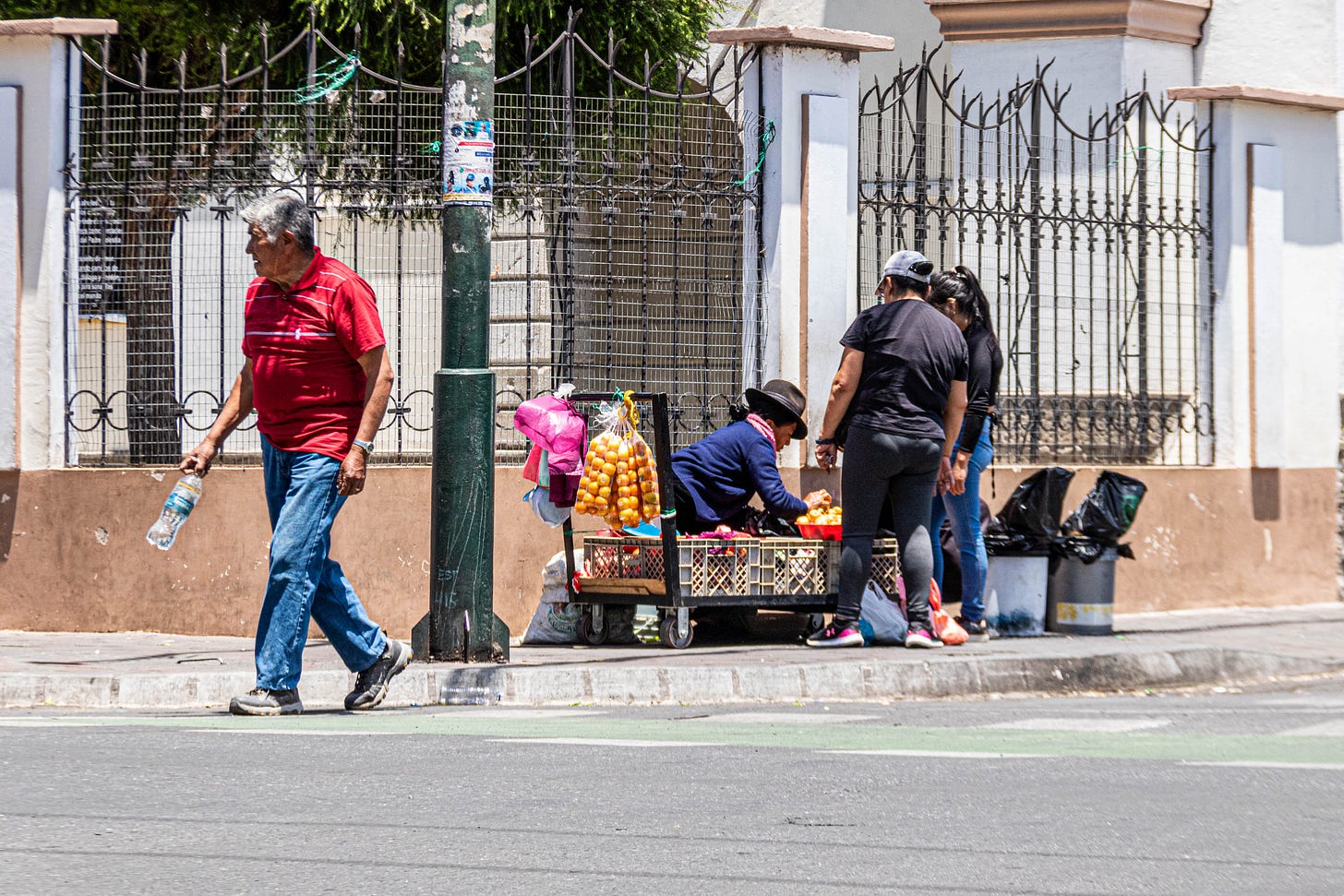
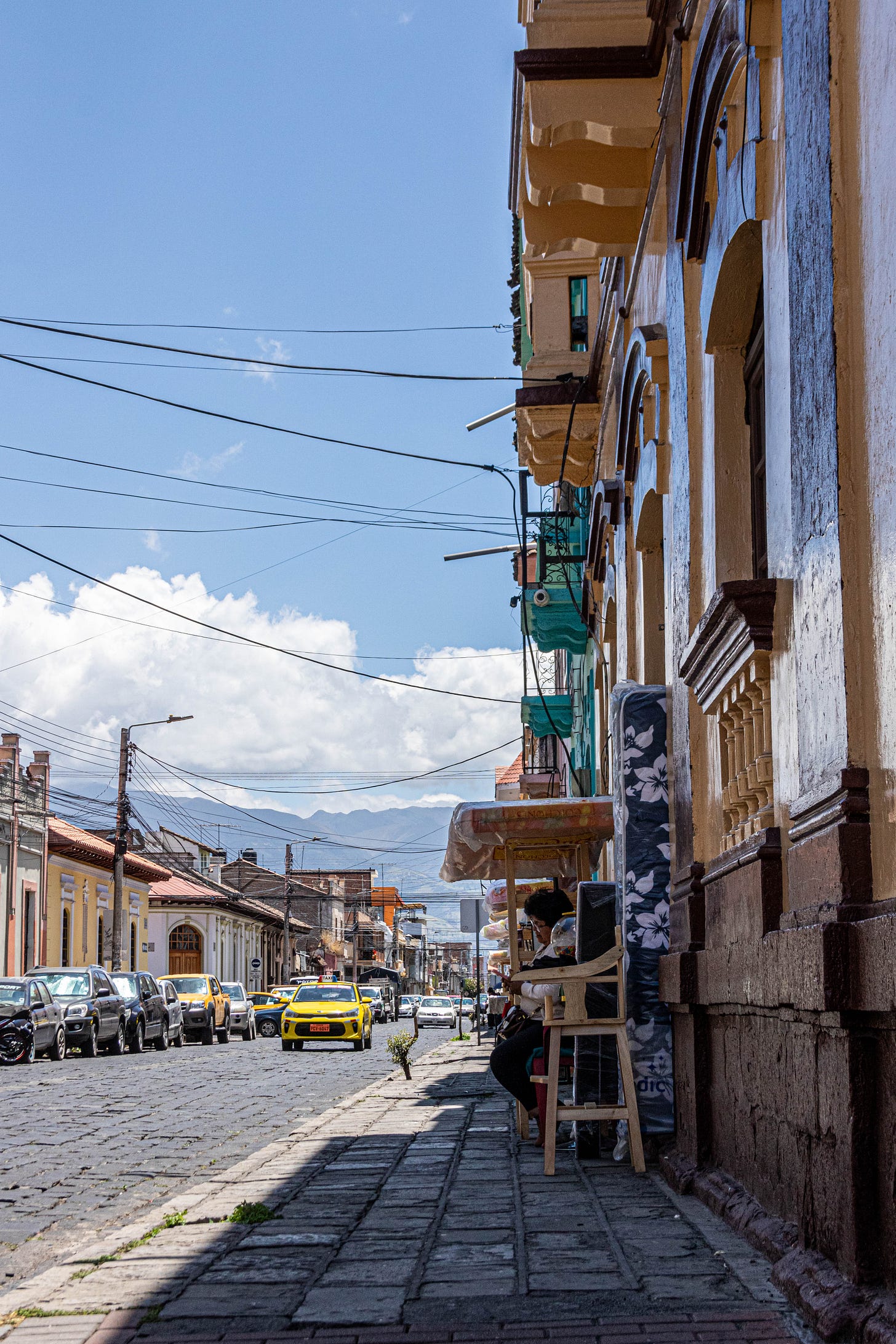
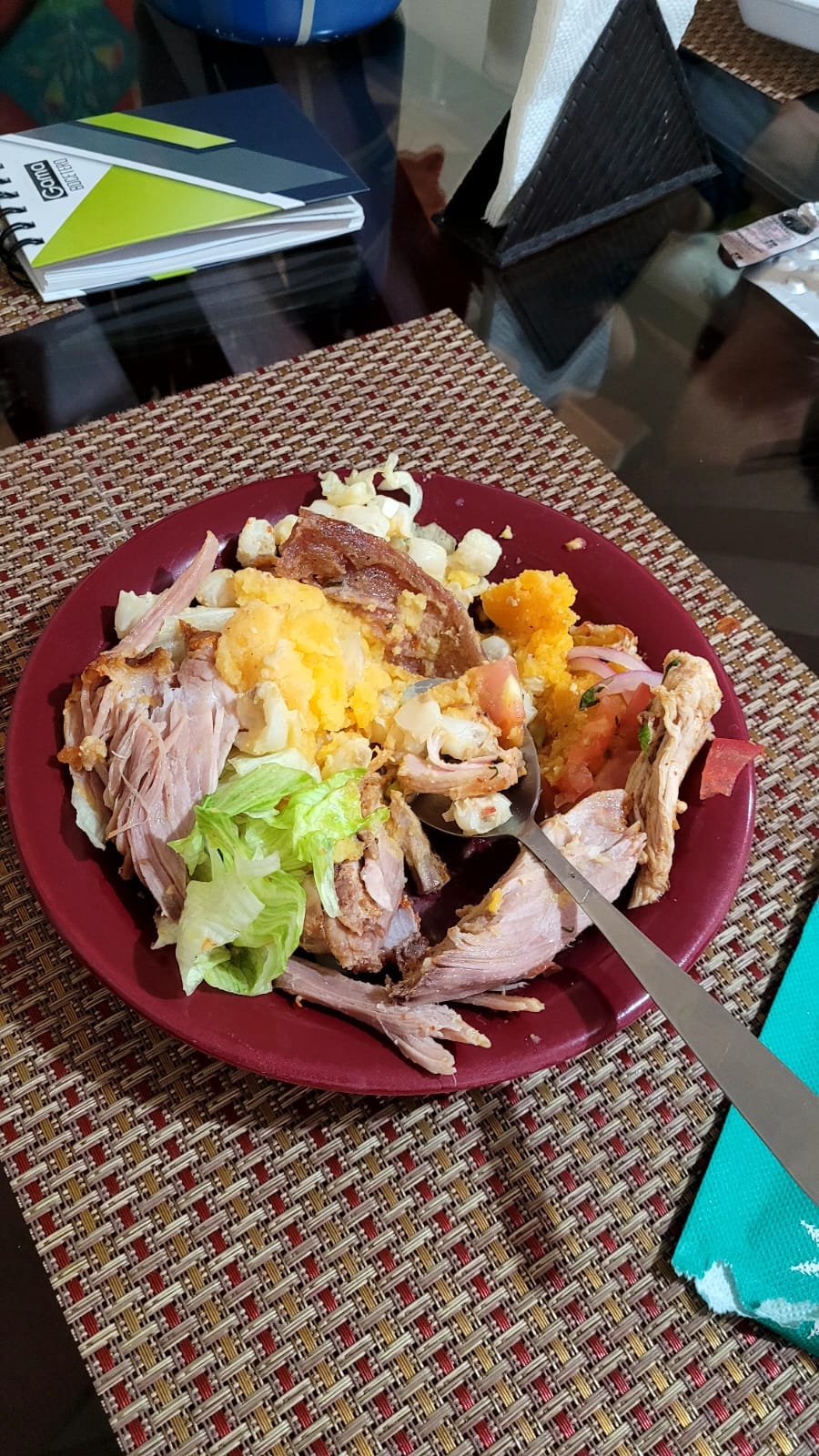




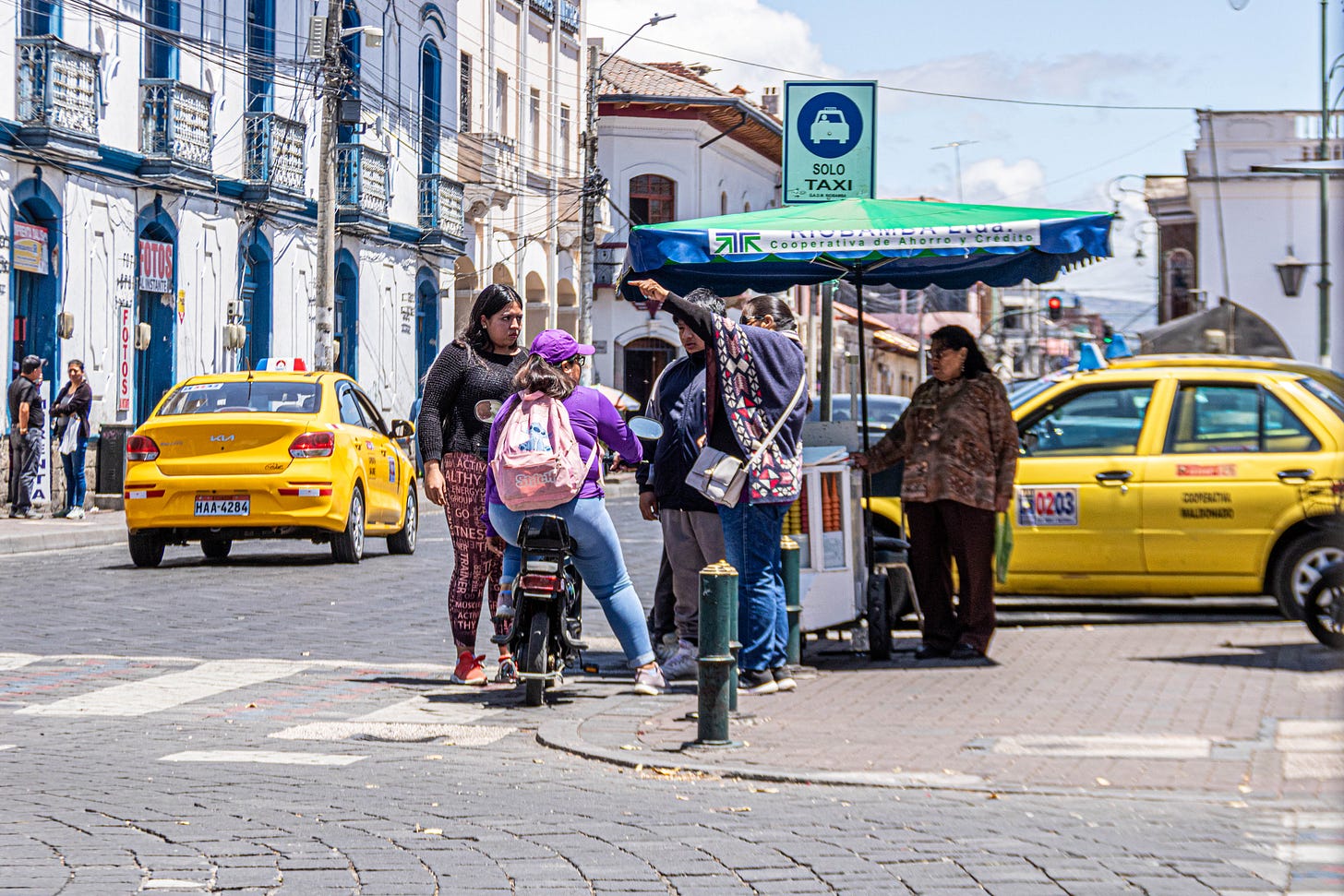
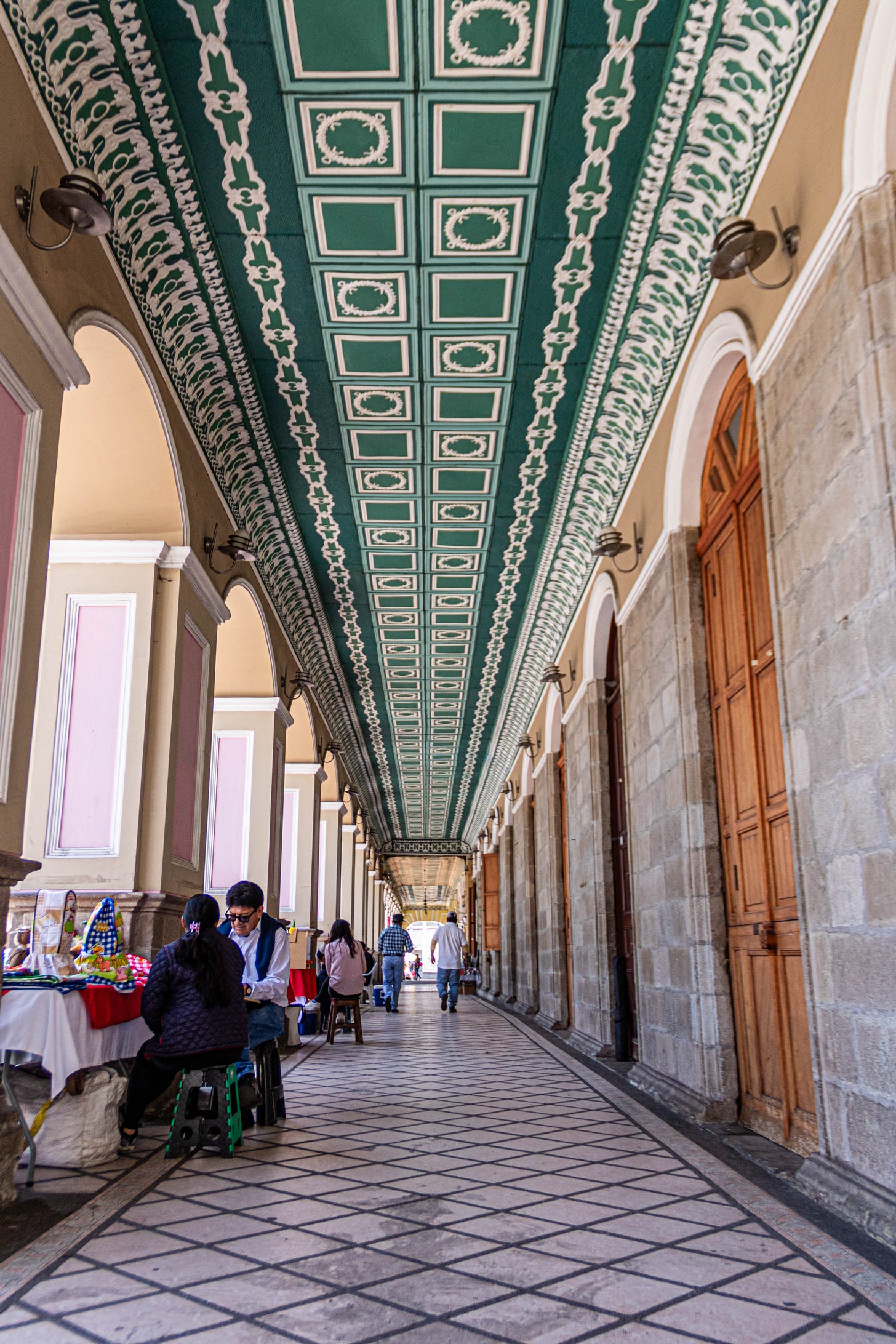



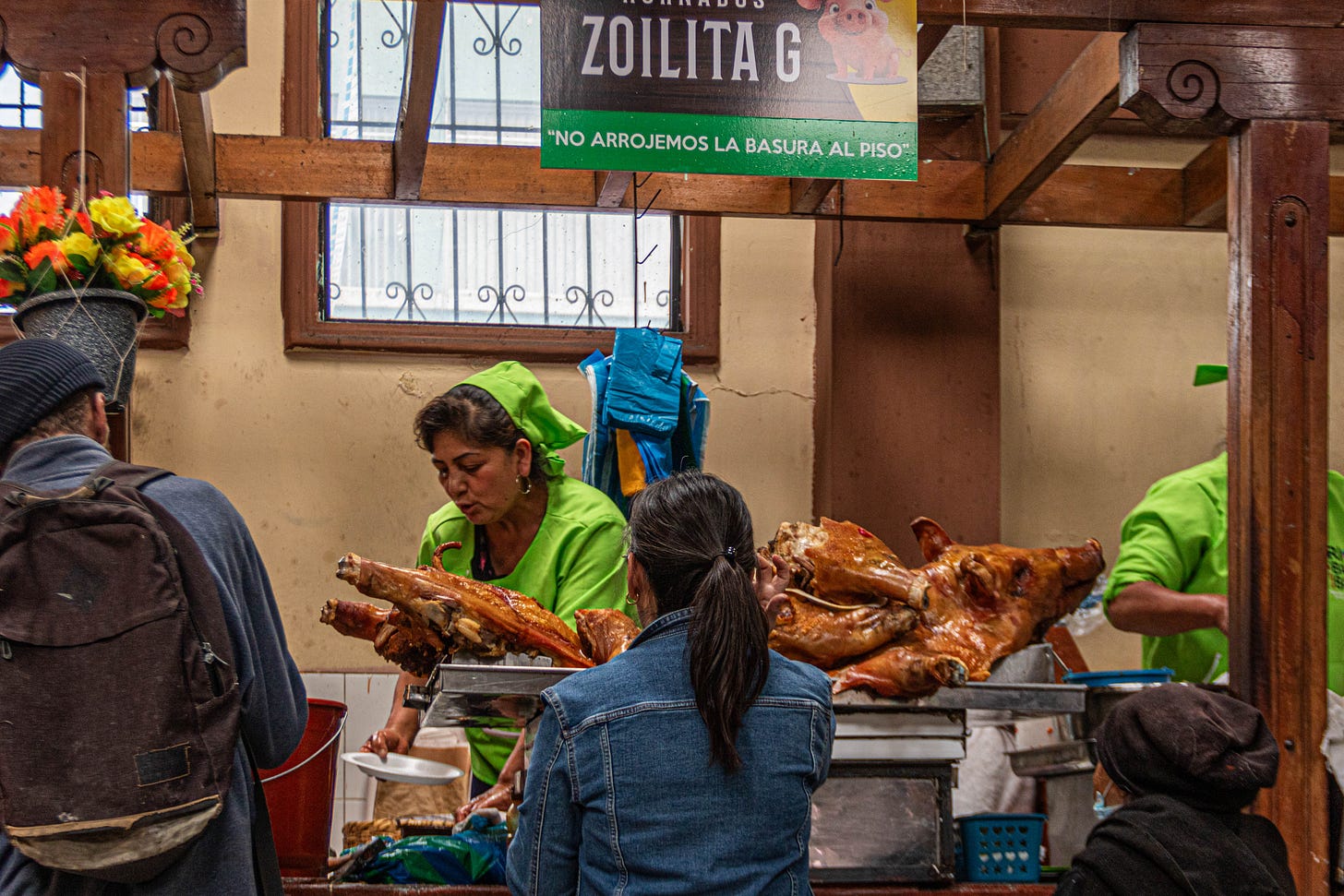

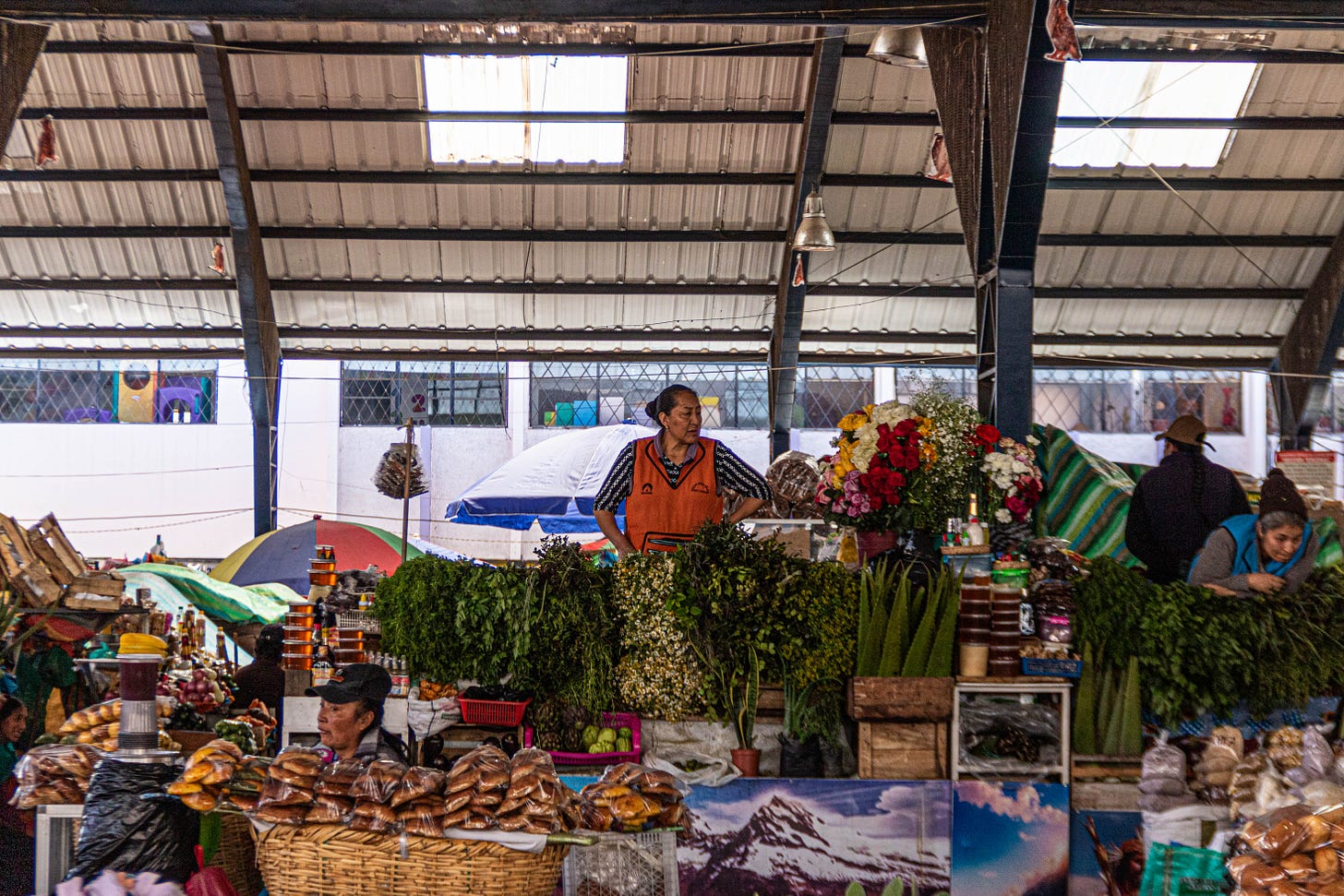
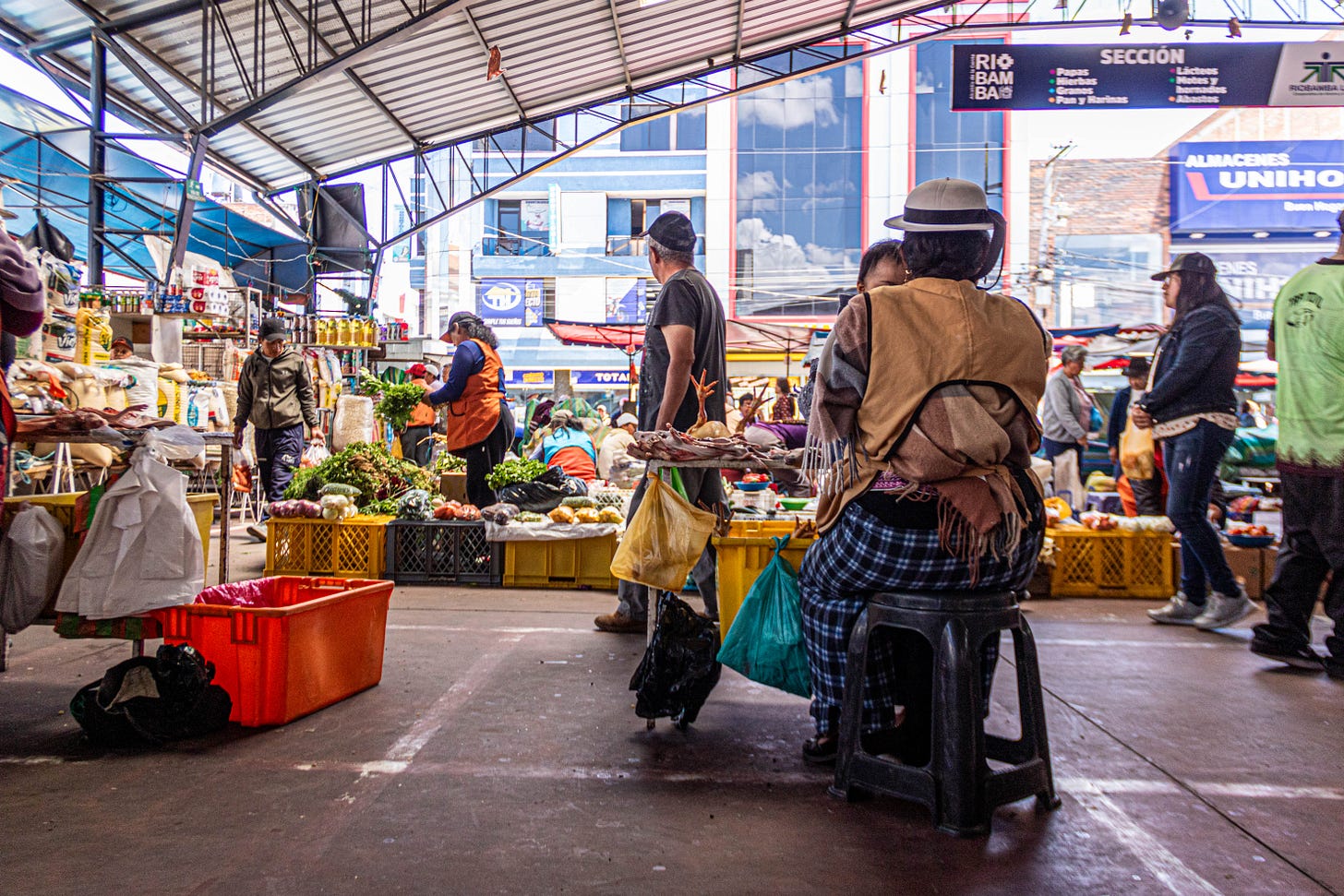

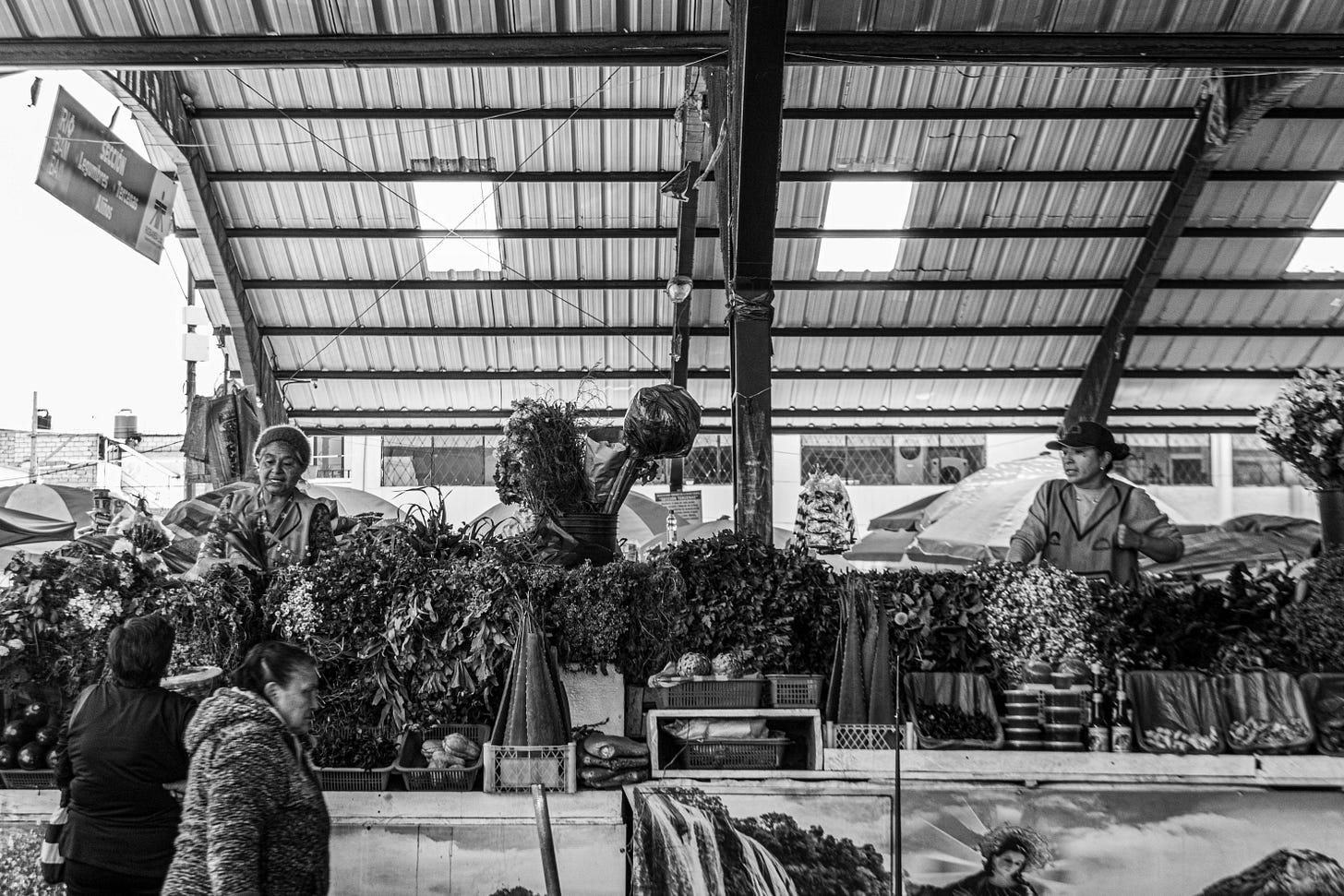




Flavio, Your description of Riobamba and beautiful photos of the city made me feel like I was there. Thank you for sharing! Kaarin